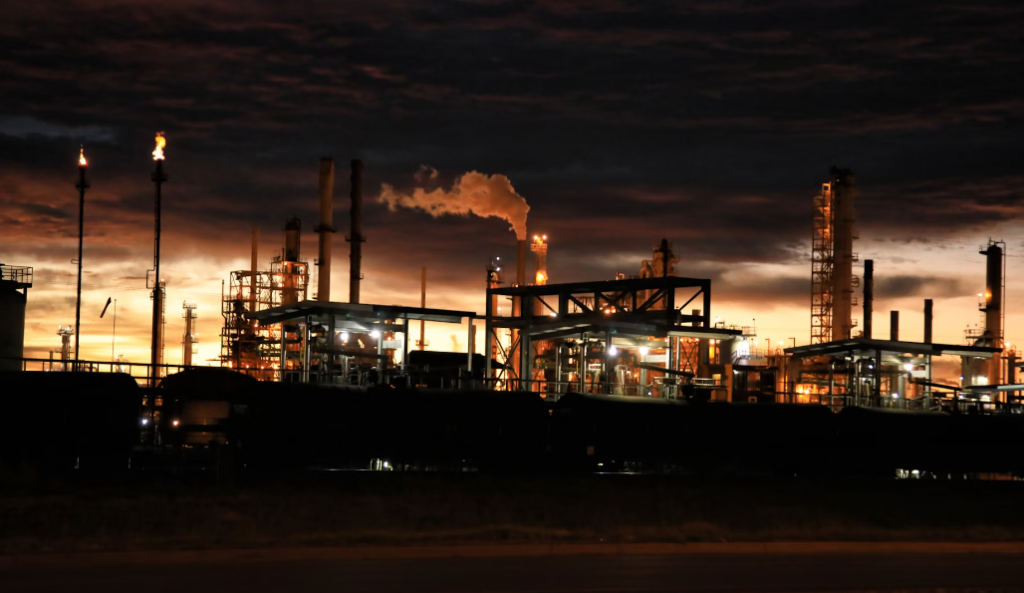In the realm of chemical manufacturing, two pillars stand tall above the rest: safety and efficiency. The seamless integration of these aspects not only ensures a thriving workplace but also fortifies the foundation of any successful chemical manufacturing enterprise. Among the myriad of tools and strategies at our disposal, the dust collection system plays a pivotal role, symbolizing the marriage of safety and efficiency in a tangible form. Understanding this balance is essential for any organization looking to lead in the chemical sector.
Implementing Advanced Safety Protocols
In today’s fast-evolving industrial landscape, traditional safety measures no longer suffice. The adoption of advanced safety protocols is crucial. These modern marvels of safety science are designed to preempt accidents before they occur, seamlessly weaving into the fabric of daily operations. But how can these advanced protocols make a real difference? By integrating predictive analytics and real-time monitoring, companies can anticipate potential hazards and take preemptive action, thus ensuring a safer workplace. It’s about creating a culture where safety is embedded in every action and decision. This approach not only minimizes risks but also instills a sense of collective responsibility among employees. Every individual becomes a vital link in the chain of safety, contributing to a more secure and efficient workplace.
Enhancing Dust Collection Systems
Dust may seem innocuous, but in the context of chemical manufacturing, it can be a formidable foe. An optimized dust collection system is necessary, not only for the sake of cleanliness but as a critical component in preventing combustible dust explosions. Regular maintenance and upgrades to these systems ensure that they function at peak efficiency, capturing particulates effectively and keeping the air we breathe clean. This not only enhances safety but also contributes to the overall efficiency of the manufacturing process. An effective dust collection system is a testament to a company’s commitment to both employee well-being and environmental stewardship. It serves as a backbone for broader safety and efficiency initiatives, reducing downtime and ensuring compliance with occupational health standards. Moreover, it highlights the interconnectedness of safety and efficiency—cleaner facilities result in smoother operations. In essence, it’s an investment that pays dividends in safety, efficiency, and regulatory compliance.
Integrating Process Automation
Automation, the herald of modern industry, promises to streamline operations like never before. By automating routine tasks, companies can minimize human error, a leading cause of accidents in the workplace. Furthermore, automation frees up human workers to focus on more complex, value-added activities. The result? A safer, more efficient production line where machines and humans work in harmony. This synergy between human ingenuity and machine precision creates a dynamic work environment where efficiency soars and safety is paramount. Automated systems also provide valuable data that can be used to further refine processes, enhancing both safety and productivity. In this digital age, embracing automation is not just a strategy—it’s a necessity for staying competitive and safe. Automation is not about replacing humans; it’s about augmenting human capabilities and creating a safer, more productive workplace.
Regular Training and Education Programs
No technology can replace the value of well-informed, well-trained personnel. Continuous education on the latest safety practices and operational efficiencies is key. Effective training programs are those that are engaging, interactive, and tailored to meet the diverse learning styles of the workforce. After all, an educated workforce is an empowered workforce. By fostering a culture of continuous learning, companies can adapt to new challenges and technologies more effectively. Training isn’t just about compliance; it’s about competence and confidence. Employees who feel confident in their skills are more likely to innovate and take proactive steps toward improving safety and efficiency. Thus, investing in education is investing in the future of the company, creating a workforce that is both skilled and motivated.
Investing in Quality Control Systems
In the chemical manufacturing industry, quality is not just a goal; it’s a prerequisite. Investing in robust quality control systems ensures that products meet stringent standards, thereby reducing waste and rework. This focus on quality from the get-go enhances both safety and efficiency, as it minimizes the chances of costly mistakes and ensures that operations run smoothly from start to finish. High-quality products also bolster the company’s reputation, leading to increased customer trust and loyalty. A strong quality control system acts as a safeguard against variability, ensuring consistency in production. It’s a clear signal to customers and regulatory bodies alike that a company is committed to excellence. Moreover, it’s a crucial factor in achieving sustainable growth, as it directly impacts the bottom line by reducing costs associated with defects. Quality and safety are inextricably linked, with each reinforcing the other to create a more resilient manufacturing process.
Adopting Lean Manufacturing Principles
Lean manufacturing is not just a buzzword; it’s a blueprint for success. By identifying and eliminating waste in all its forms, companies can achieve a leaner, more efficient operation. This principle extends beyond the factory floor, influencing everything from supply chain management to employee workflows. The result is a more agile, responsive manufacturing process that prioritizes value and minimizes waste. Lean principles encourage a holistic view of the manufacturing process, where every step is scrutinized for potential improvements. This mindset not only streamlines operations but also fosters a culture of continuous improvement among employees. They become more attuned to inefficiencies and more innovative in proposing solutions. As waste is minimized, resources are better utilized, leading to significant cost savings and a lower environmental footprint. Furthermore, lean manufacturing enhances product quality by eliminating errors through process standardization and simplification. This proactive approach to manufacturing sets a solid foundation for achieving both short-term gains and long-term sustainability.
Continuous Process Improvement
The quest for perfection is endless. Continuous process improvement, a cornerstone of lean manufacturing, encourages companies to constantly evaluate and refine their operations. This iterative process not only enhances efficiency but also fosters a culture of innovation and improvement. It’s a reminder that in the world of chemical manufacturing, there’s always room for better. Encouraging employee involvement in this process not only generates valuable insights but also boosts morale by giving everyone a stake in the company’s success. This bottom-up approach to innovation can uncover opportunities that might otherwise be overlooked. Moreover, by making small, incremental changes, companies can avoid the disruptions associated with large-scale overhauls. Continuous improvement is a journey, not a destination, and it requires commitment, creativity, and collaboration to navigate successfully.
Prioritizing Environmental Compliance
Last but certainly not least, environmental compliance is non-negotiable. The chemical industry, with its potential impact on the environment, must lead the charge in sustainable practices. By prioritizing environmental compliance, companies not only fulfill their legal obligations but also contribute to a healthier planet. This commitment to sustainability is a testament to the industry’s role in shaping a better future. It involves not just meeting current regulations but anticipating future standards and exceeding them. Sustainable practices can also open up new markets and attract environmentally conscious customers, offering a competitive edge. Moreover, they can lead to innovations in product design and production processes that benefit both the environment and the bottom line. Ultimately, environmental compliance is about taking responsibility for the world we live in and ensuring that the legacy of chemical manufacturing is one of stewardship and sustainability.
Conclusion
Maximizing safety and efficiency in chemical manufacturing is not just about implementing strategies; it’s about weaving a tapestry of best practices that, together, create a resilient, high-performing operation. From enhancing dust collection systems to prioritizing environmental compliance, each strategy plays a critical role in this intricate dance of safety and efficiency. As we embrace these strategies, we not only safeguard our employees and communities but also secure the future of our industry. The path forward is clear: by committing to continuous improvement, quality, and sustainability, we can achieve operational excellence and make a positive impact on the world.




